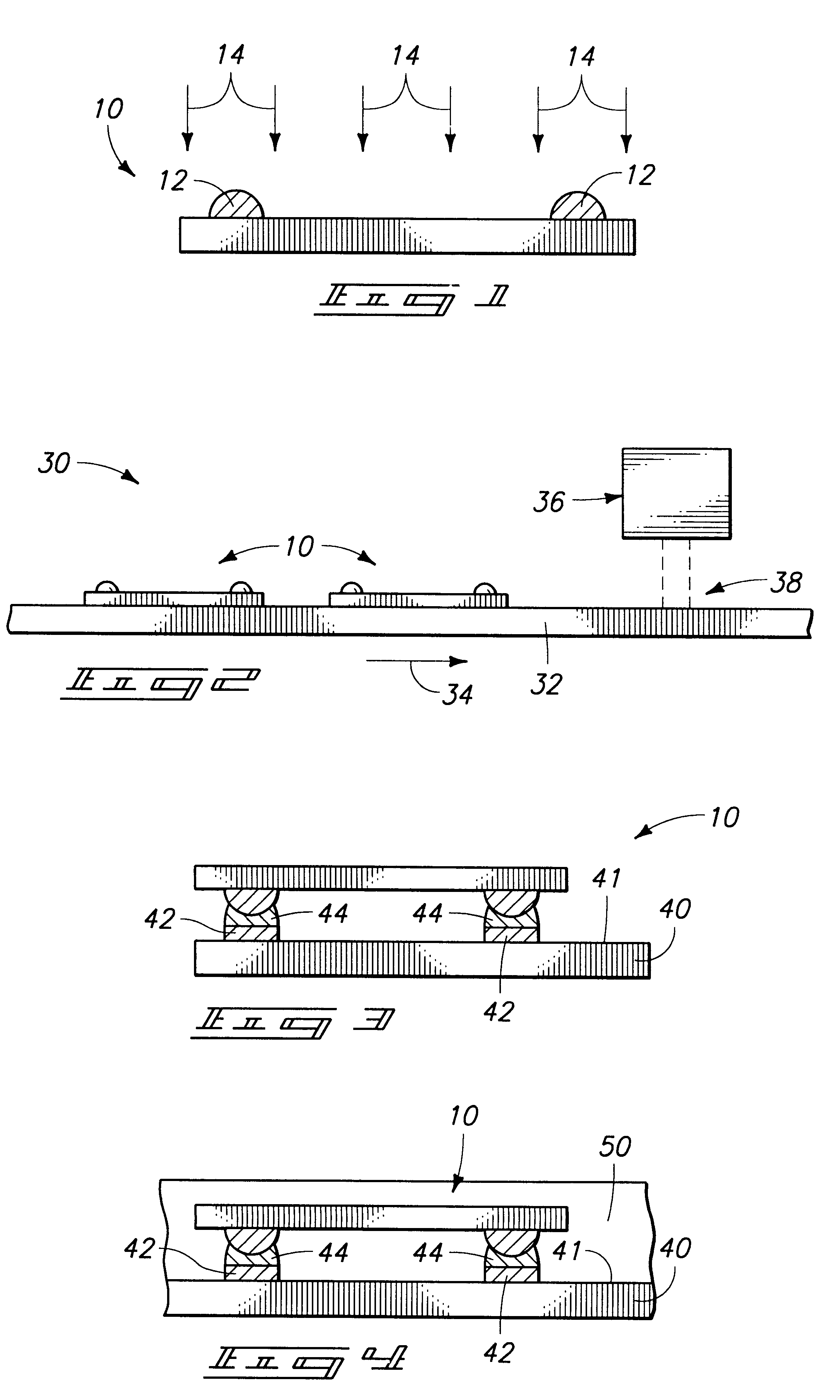Circuitry interconnection method
a technology of interconnection and circuit, applied in the direction of printed circuit aspects, instruments, chemistry apparatus and processes, etc., can solve the problems of less than desirable adhesion degree and less than desired conductivity in the interconnection, and achieve the effect of enhancing the adhesion of bumps
- Summary
- Abstract
- Description
- Claims
- Application Information
AI Technical Summary
Benefits of technology
Problems solved by technology
Method used
Image
Examples
example 2
In a manner similar to Example 1, multiple substrates having exposed epoxy bumps are passed through the SPE UV ultraviolet light system. The profile within the system includes, energy of 643.60 mJ / cm.sup.2, a peak energy of 280 mW / cm.sup.2, an average energy of 90.01 mW / cm.sup.2 and a peak temperature of 116.8.degree. C. Epoxy bumps are exposed three to four times to this profile, with such providing significant increases in adhesion and conductance compared to a control substrate.
example 3
In a similar manner as described in Example 2, multiple substrates are passed through a LESCO Ultraviolet Light Curing System, available from LESCO Incorporated, Light Wave Energy Systems Company, Redondo Beach, Calif. Such system is equipped with a Fusion Systems Corporation F300-18 "D" type bulbs. The following data regarding the ultraviolet light intensity and temperature profile is used with respect to the ultraviolet light exposure per pass through the system. This profile includes ultraviolet light energy of 1.48 J / cm.sup.2 ; peak energy of 468.00 mW / cm.sup.2 ; average energy of 158.08 mW / cm.sup.2 ; and peak temperature of 72.0.degree. C. Operating at this profile, the conductive polymer bumps of the substrate passed only once through the system have considerably improved adhesion.
PUM
| Property | Measurement | Unit |
|---|---|---|
| wavelength | aaaaa | aaaaa |
| ultraviolet radiation wavelength | aaaaa | aaaaa |
| ultraviolet radiation wavelength | aaaaa | aaaaa |
Abstract
Description
Claims
Application Information
 Login to View More
Login to View More - R&D
- Intellectual Property
- Life Sciences
- Materials
- Tech Scout
- Unparalleled Data Quality
- Higher Quality Content
- 60% Fewer Hallucinations
Browse by: Latest US Patents, China's latest patents, Technical Efficacy Thesaurus, Application Domain, Technology Topic, Popular Technical Reports.
© 2025 PatSnap. All rights reserved.Legal|Privacy policy|Modern Slavery Act Transparency Statement|Sitemap|About US| Contact US: help@patsnap.com


